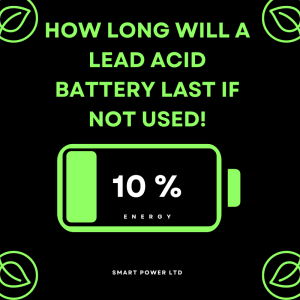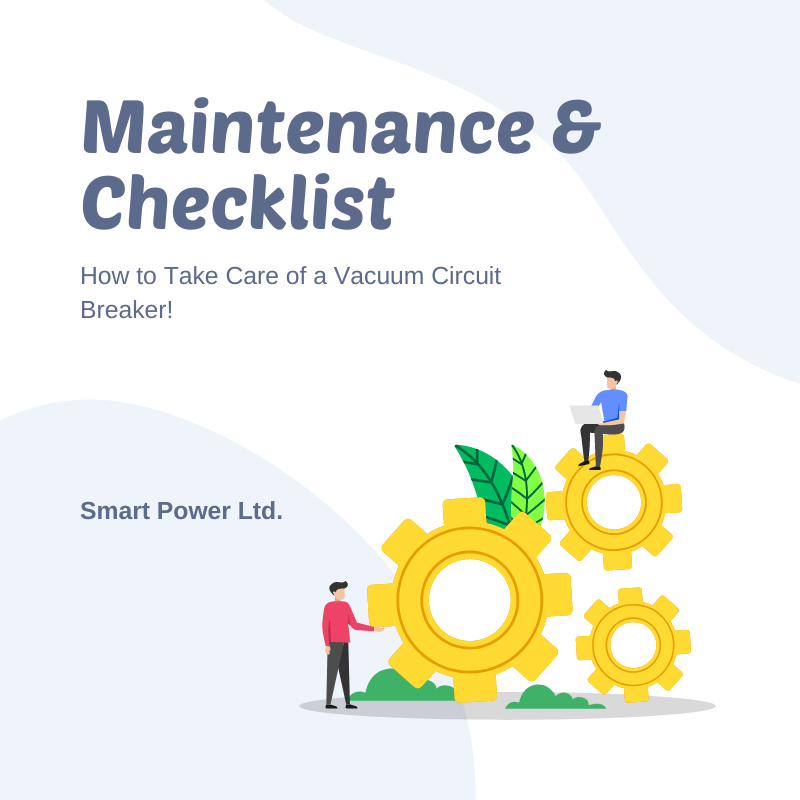To maintain a vacuum circuit breaker, follow these steps: clear any old grease, check the conditions of the fixed and the floating contacts, inspect the positioning of the contacts, and maintain a clean environment. A vacuum circuit breaker is an essential component in electrical power systems, making it crucial to keep it properly maintained and functioning correctly.
Failing to maintain the circuit breaker can result in inefficiency and even dangerous situations. Since vacuum circuit breakers have no auxiliary system, they must be maintained with care and caution to avoid any potential system breakdown. We will discuss the maintenance procedure and checklist for a vacuum circuit breaker to ensure its continued safe and efficient operation.
Introduction To Vacuum Circuit Breakers
Vacuum circuit breakers are a type of circuit breaker that use vacuum interrupters instead of traditional arc-extinguishing mediums like oil or air to break the circuit. They are preferred for use in high voltage electrical systems due to their high reliability, simple operation, and low maintenance requirements.
The principle of operation of a vacuum circuit breaker is based on the ionization of the contacts between the stationary and moving parts of the breaker, which creates a conducting path for the current. Proper maintenance is crucial for the efficient functioning of vacuum circuit breakers, which can be achieved through routine inspections and tests.
There are two types of maintenance for vacuum circuit breakers – periodic and predictive. Periodic maintenance involves routine inspections and cleaning of the breaker, while predictive maintenance uses data analysis to predict equipment failure and prevent damage before it occurs.
Type of Maintenance | Description |
Periodic Maintenance | Involves routine inspections and cleaning of the breaker |
Predictive Maintenance | Uses data analysis to predict equipment failure and prevent damage before it occurs |
Regular maintenance of vacuum circuit breakers is essential for their longevity and efficient functioning. It includes clearing old grease, checking contacts, inspecting positioning, and measuring insulation. If you find any dust or debris, use a mild solvent to clean it. It is recommended to perform routine inspections and testing, including visual and mechanical inspection, insulation resistance testing, and cleaning regularly.
Routine Maintenance Checklist
Proper maintenance of a vacuum circuit breaker is essential for it to function effectively and efficiently. Follow a checklist that includes visual and mechanical inspection, testing, cleaning, and certification to keep the circuit breaker in good condition. Regular maintenance will ensure that your vacuum circuit breaker operates smoothly for a longer period.
Routine Maintenance Checklist
Visual Inspection: Check for any signs of physical damage such as cracks or corrosion on the circuit breaker. Inspect the electrical connections, control wiring, and attachments for any signs of wear and tear. |
Cleaning: Regularly clean the circuit breaker exterior and interior using a soft dry cloth or vacuum cleaner. If required, use distilled water or mild solvent to remove stubborn dirt and dust. |
Testing Procedures: Perform tests such as insulation resistance, contact resistance, over-potential, and timing check to ensure optimum performance of the circuit breaker. |
Contact Resistance Check: Check the condition of fixed and floating contacts, and inspect the positioning of contacts. |
Insulation Resistance Check: Measure the insulation, phase-to-phase, and phase-to-earth using an appropriate meter to verify the insulation resistance values. |
Timing Check: Perform timing tests to ascertain that the breaker’s opening and closing times are accurate. |
Advanced Maintenance Procedures
Maintenance of a Vacuum Circuit Breaker is necessary for its smooth functioning and longevity. Advanced maintenance procedures for vacuum circuit breakers are Over-Potential Test, IR Testing, Partial Discharge Testing, Replacing Worn Out Parts and Calibration. Over-potential test should be conducted to check the insulation strength of the VCB. IR testing measures the insulation resistance of the vacuum circuit breaker. Partial discharge testing is used to detect damage inside the vacuum interrupter. Worn out parts must be replaced with new ones to prevent the risk of malfunction. Calibration ensures that the VCB is in line with required standards.
Common Issues And Troubleshooting
Regular maintenance of a vacuum circuit breaker is vital to ensure its efficiency. Performing visual and mechanical inspections, cleaning, insulation resistance, contact resistance, and over-potential testing are important steps that should be included in the circuit breaker maintenance checklist. Checking the positioning of the contacts and measuring phase-to-phase and phase-to-earth insulation are other routine tests required to maintain the vacuum circuit breaker.
Vacuum Integrity Issues | Inspect for any potential leaks in the VCB. Check vacuum integrity with a Megger or Hi-pot test. Replace the faulty part if identified. |
Arc Interruption Failure | Check the main contacts for any damage and measure their resistance. Verify the proper operation of all auxiliary switches, motor operators and springs. |
Mechanical Failure | Examine the mechanical linkages and operating mechanisms for wear and proper alignment. Lubricate any moving parts and replace any faulty parts. |
Contamination Issues | If wiping is not sufficient, use distilled water or a mild solvent. Keep the VCB clean and dry. |
Regular maintenance of a VCB is crucial to ensure it operates correctly. Some common issues that can impact the VCB are vacuum integrity issues, arc interruption failure, mechanical failure, and contamination issues. To prevent these issues, regular inspections should be performed, and any faulty parts should be replaced immediately. Keep the VCB clean from debris and contaminants to avoid damage and ensure efficient operation. Check the main contacts, auxiliary switches, motor operators, and springs for proper operation. Lubricate moving parts and examine mechanical linkages and operating mechanisms for wear and proper alignment.
Safety Precautions And Guidelines
Taking care of a vacuum circuit breaker requires proper maintenance and adherence to safety precautions. This includes checking and cleaning the main contacts and covers, measuring insulation resistance and timing, and performing testing and certification. It’s important to follow a maintenance checklist and seek professional assistance when needed to ensure safety and optimum operation.
Guidelines for Safety Precautions and Guidelines
Importance of Safe Working Practices: Always follow safe working practices when dealing with vacuum circuit breakers.
Personal Protective Equipment: Wearing personal protective equipment (PPE) is crucial when working with a vacuum circuit breaker.
Working with High Voltage Equipment: Working with high voltage equipment can be dangerous if proper precautions are not taken. Always make sure the circuit is switched off and de-energized before inspecting or performing maintenance.
Handling Hazardous Materials: Proper handling of hazardous materials, such as cleaning solvents, is essential. Always wear gloves and protective clothing when handling these materials. Dispose of them responsibly and follow regulations for their disposal.
Testing And Certification Standards
When it comes to vacuum circuit breaker (VCB) maintenance, testing and certification standards play an important role. There are various national and international standards that need to be followed while conducting tests and certifying a VCB. Understanding test reports and certification procedures is crucial to ensure the VCB’s safe and efficient operation. The maintenance procedure for a VCB includes visual and mechanical inspection, testing for insulation resistance, contact resistance, over-potential, and timing, cleaning, and re-testing. After the VCB has been tested and certified, test reports need to be properly documented and maintained. Some routine tests for VCBs include vacuum bottle integrity test, contact resistance test, and insulation resistance test. Regular maintenance of a VCB involves cleaning the contacts, checking the positioning of the contacts, and clearing any old grease.
The Future Of Vacuum Circuit Breakers
To ensure proper functioning and prevent breakdowns, regular maintenance of vacuum circuit breakers is necessary. The maintenance checklist for vacuum circuit breakers includes various tasks like visual and mechanical inspection, testing, insulation resistance, contact resistance, over-potential, timing, and cleaning, followed by re-testing, certification, and test reports.
the operation process is essential for it to have a long service life. Performing regular maintenance on a Vacuum Circuit Breaker (VCB) ensures that it works correctly and can avoid any unexpected failures or breakdowns. Some innovative maintenance techniques for VCBs include infrared thermography, oil analysis, and vibration analysis. Emerging technologies such as smart sensors and IoT devices can be integrated into the VCBs to monitor their performance, making it easier to predict and prevent system failures. Moreover, sustainable and energy-efficient VCB designs can reduce power losses and protect the environment. In conclusion, a well-maintained VCB ensures the safety and reliability of power systems and is vital for the smooth running of any industry or infrastructure.
Conclusion
Regular maintenance and checkups are crucial for the proper functioning and longevity of vacuum circuit breakers. By following the simple yet important checklist outlined in this post, you can ensure that your vacuum circuit breaker remains in good condition and free from damage.
Taking care of the circuit breaker will also reduce the risk of accidents and electrical failures, saving you from potentially costly repairs and replacements. Remember, prevention is better than cure, and with proper maintenance, your vacuum circuit breaker can last for years to come.
Frequently Asked Questions
To maintain a vacuum circuit breaker, you need to perform visual and mechanical inspection, testing, insulation resistance, contact resistance, over-potential, timing, cleaning, re-testing, and certification. Additionally, you can clear any old grease, check the condition and positioning of contacts, and use distilled water or mild solvents to remove dirt and dust..
To do circuit breaker maintenance, follow these steps: 1. Perform visual and mechanical inspection. 2. Test the breaker. 3. Check insulation and contact resistance. 4. Measure over-potential and timing. 5. Clean the breaker. 6. Re-test, certify and generate a report..
The steps for ACB maintenance include checking and cleaning main contacts, cleaning all covers and arc shields, checking security of control wiring and associated components, testing mechanical operations, measuring insulation phase to phase, and phase to earth. Reinstating covers and arc extinguishing shields is also necessary.
The routine tests for vacuum circuit breakers include visual and mechanical inspection, testing, insulation resistance, contact resistance, over-potential, timing, cleaning, and re-testing. The contacts should be cleaned, and insulation should be measured. Maintenance should involve wiping away dust and debris, and if necessary, using distilled water or mild solvent.

Top 10 Uninterrupted Power Supply (UPS) Brand in Bangladesh
Table of Contents The top 10 uninterrupted power supply (UPS) brands in Bangladesh are APC by Schneider Electric, Luminous, Genus Power, Microtek, Amaron, Eaton Corporation

Best Mini IPS for Power Cutting Solution Price in Bangladesh
Table of Contents For the best mini IPS for power cutting solution price in Bangladesh, there are various options such as DSP IPS, Rahimafrooz IPS,

How Long Will a Lead Acid Battery Last if not Used!
Table of Contents A sealed lead acid battery can generally sit on a shelf at room temperature with no charging for up to a year

